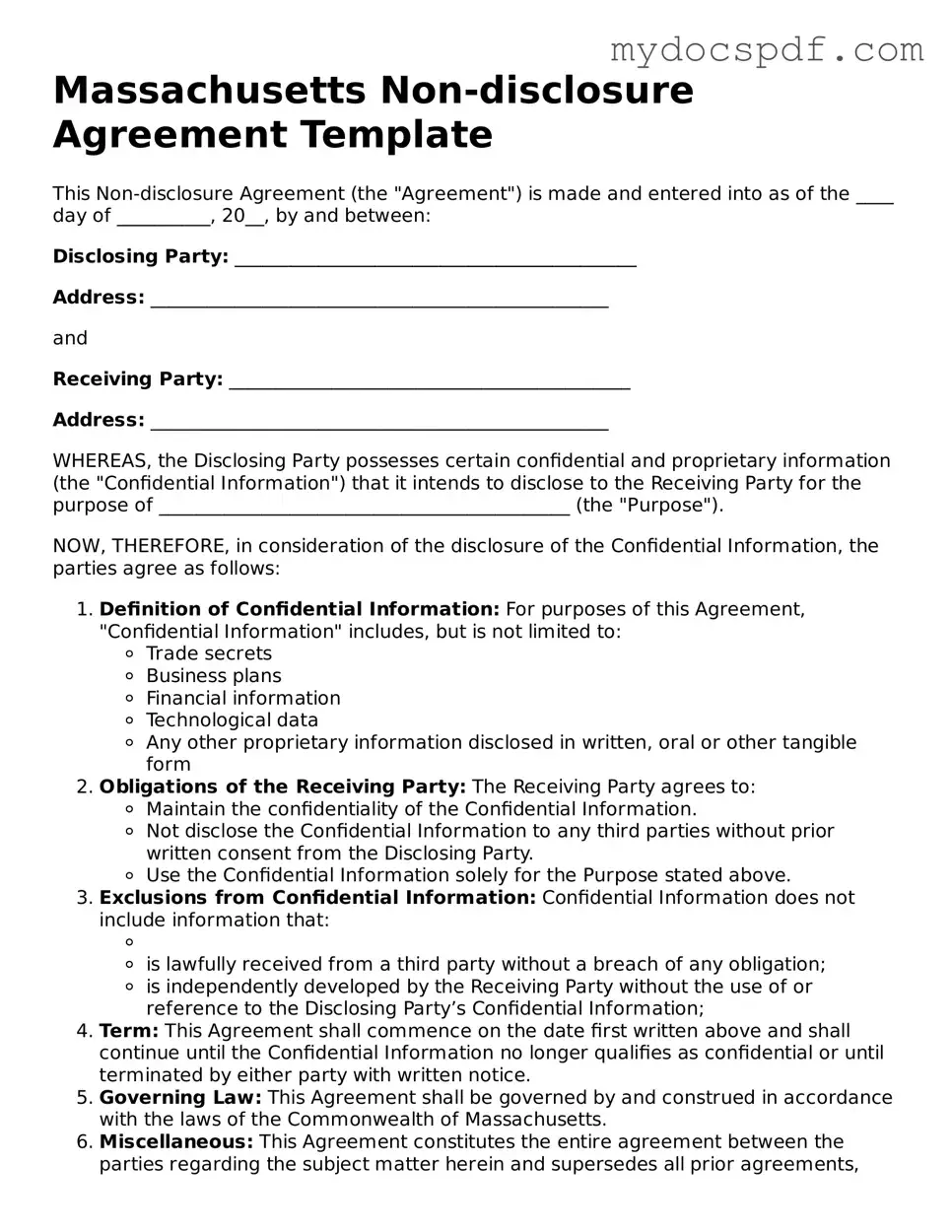Massachusetts Non-disclosure Agreement Template
This Non-disclosure Agreement (the "Agreement") is made and entered into as of the ____ day of __________, 20__, by and between:
Disclosing Party: ___________________________________________
Address: _________________________________________________
and
Receiving Party: ___________________________________________
Address: _________________________________________________
WHEREAS, the Disclosing Party possesses certain confidential and proprietary information (the "Confidential Information") that it intends to disclose to the Receiving Party for the purpose of ____________________________________________ (the "Purpose").
NOW, THEREFORE, in consideration of the disclosure of the Confidential Information, the parties agree as follows:
- Definition of Confidential Information: For purposes of this Agreement, "Confidential Information" includes, but is not limited to:
- Trade secrets
- Business plans
- Financial information
- Technological data
- Any other proprietary information disclosed in written, oral or other tangible form
- Obligations of the Receiving Party: The Receiving Party agrees to:
- Maintain the confidentiality of the Confidential Information.
- Not disclose the Confidential Information to any third parties without prior written consent from the Disclosing Party.
- Use the Confidential Information solely for the Purpose stated above.
- Exclusions from Confidential Information: Confidential Information does not include information that:
-
- is lawfully received from a third party without a breach of any obligation;
- is independently developed by the Receiving Party without the use of or reference to the Disclosing Party’s Confidential Information;
- Term: This Agreement shall commence on the date first written above and shall continue until the Confidential Information no longer qualifies as confidential or until terminated by either party with written notice.
- Governing Law: This Agreement shall be governed by and construed in accordance with the laws of the Commonwealth of Massachusetts.
- Miscellaneous: This Agreement constitutes the entire agreement between the parties regarding the subject matter herein and supersedes all prior agreements, understandings, and negotiations.
IN WITNESS WHEREOF, the parties have executed this Non-disclosure Agreement as of the day and year first above written.
Disclosing Party:
_________________________________________
Signature
_________________________________________
Name
_________________________________________
Title
Receiving Party:
_________________________________________
Signature
_________________________________________
Name
_________________________________________
Title
